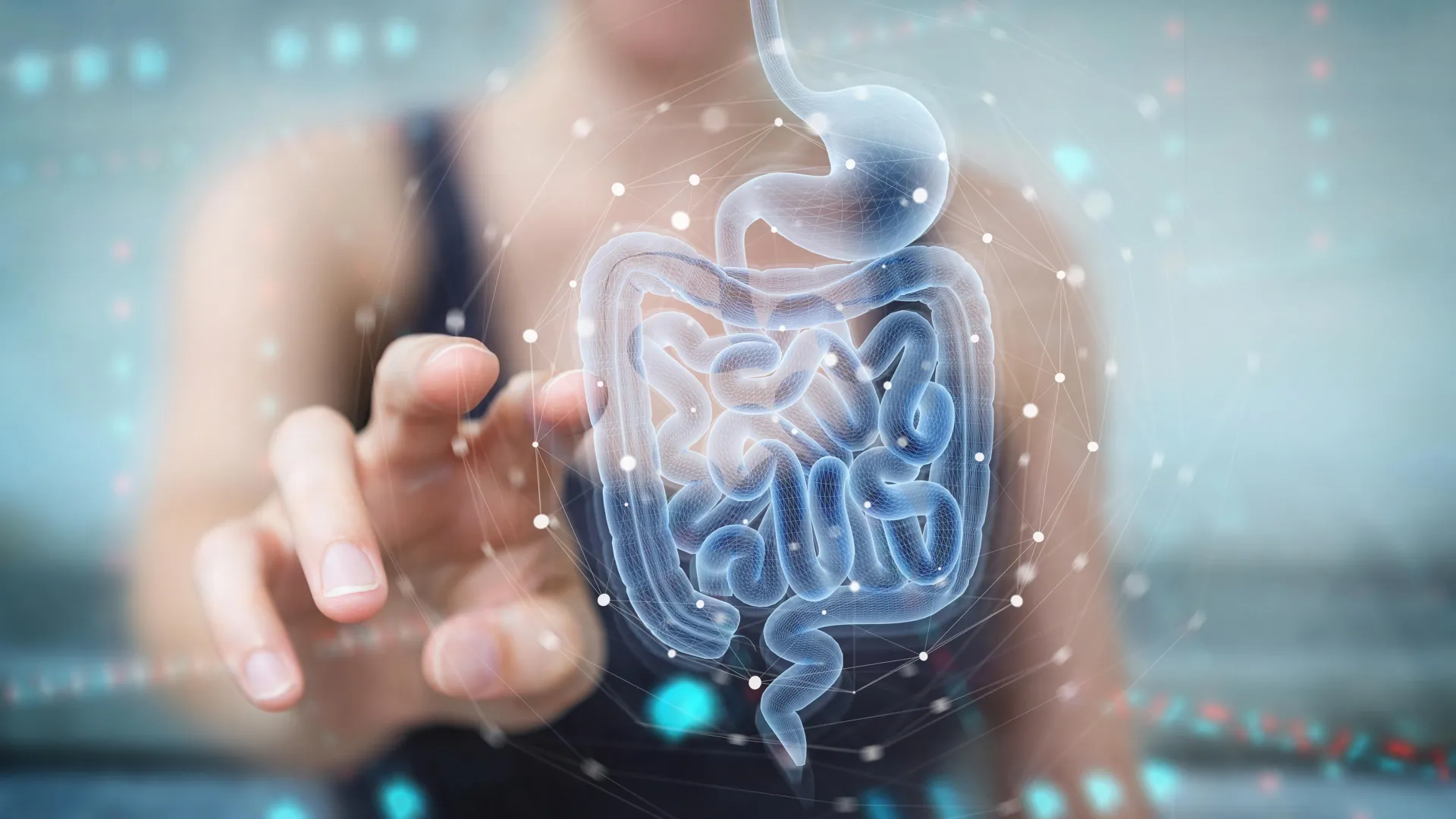A 25-year Crohn’s disease mystery finally cracked by AI
AI uncovers how a severed bond between two gut proteins sparks Crohn’s disease, and how restoring it could heal inflammation.
- Date:
- November 3, 2025
- Source:
- University of California - San Diego
- Summary:
- UC San Diego researchers combined artificial intelligence with molecular biology to unravel how immune cells in the gut decide between inflammation and healing, a process gone awry in Crohn’s disease. They discovered that the NOD2 gene’s interaction with a protein called girdin is crucial for maintaining balance. When this connection is lost due to a common mutation, inflammation spirals out of control.
- Share:

The human digestive system relies on two main kinds of macrophages, a type of specialized white blood cell, to maintain intestinal health. One group, the inflammatory macrophages, attacks harmful microbes, while the other, the non-inflammatory macrophages, repairs tissue and promotes healing. In Crohn's disease (a chronic form of inflammatory bowel disease, or IBD), this balance breaks down. When the inflammatory type dominates, the result is persistent inflammation that damages the intestinal wall and causes pain and other symptoms.
Scientists at the University of California San Diego School of Medicine have created a new method that combines artificial intelligence (AI) with cutting-edge molecular biology tools to uncover what determines whether a macrophage becomes inflammatory or restorative.
Their research also sheds light on a mystery that has puzzled scientists for decades: how a gene known as NOD2 influences this process. Discovered in 2001, NOD2 was the first gene linked to an increased risk of Crohn's disease.
Mapping the Gut's Genetic Blueprint
Using advanced machine learning, the team examined thousands of macrophage gene expression profiles taken from both healthy colon tissue and tissue affected by IBD. This analysis revealed a genetic signature made up of 53 genes that consistently distinguished between aggressive, inflammatory macrophages and those responsible for repairing tissue.
Among these 53 genes, one encodes a protein called girdin. The researchers discovered that in non-inflammatory macrophages, a particular part of the NOD2 protein attaches to girdin. This interaction helps keep inflammation under control, removes harmful bacteria, and allows tissue to heal. However, the most common Crohn's disease mutation in the NOD2 gene deletes the section where girdin normally binds. Without that connection, the system becomes unbalanced, tipping toward chronic inflammation.
"NOD2 functions as the body's infection surveillance system," said senior author Pradipta Ghosh, M.D., professor of cellular and molecular medicine at UC San Diego School of Medicine. "When bound to girdin, it detects invading pathogens and maintains gut immune balance by swiftly neutralizing them. Without this partnership, the NOD2 surveillance system collapses."
Testing the Discovery in Animal Models
To confirm their findings, the scientists compared mouse models of Crohn's disease that lacked the girdin protein with those that still had it. The mice missing girdin developed severe gut inflammation and an altered microbiome, and many died from sepsis, a dangerous condition caused by an uncontrolled immune response that inflames the entire body and harms vital organs.
"The gut is a battlefield, and macrophages are the peacekeepers," said co-first author Gajanan D. Katkar, Ph.D., assistant project scientist at UC San Diego School of Medicine. "For the first time, AI has allowed us to clearly define and track the players on two opposing teams."
Toward New Treatments for Crohn's Disease
By merging AI-based analysis, biochemical research, and animal experiments, the study resolves one of the longest-standing questions in Crohn's disease research. The findings explain how a crucial genetic mutation drives inflammation and could guide the development of new therapies aimed at restoring the lost partnership between girdin and NOD2.
The study was published on October 2 in the Journal of Clinical Investigation.
Story Source:
Materials provided by University of California - San Diego. Note: Content may be edited for style and length.
Journal Reference:
- Gajanan D. Katkar, Mahitha Shree Anandachar, Stella-Rita C. Ibeawuchi, Ella G. McLaren, Megan L. Estanol, Kennith Carpio-Perkins, Shu-Ting Hsu, Celia R. Espinoza, Jane E. Coates, Yashaswat S. Malhotra, Madhubanti Mullick, Vanessa Castillo, Daniella Vo, Saptarshi Sinha, Pradipta Ghosh. Distinct colitis-associated macrophages drive NOD2-dependent bacterial sensing and gut homeostasis. Journal of Clinical Investigation, 2025; DOI: 10.1172/JCI190851
Cite This Page: